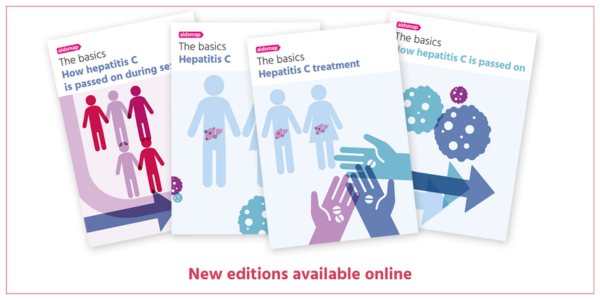Persistent low level of detectable HIV and risk of serious health events

Your viral load test shows how much HIV there is in a small sample of your blood. Having an 'undetectable' viral load means there’s very little HIV in your blood. In the UK and many other high-income countries, the cut-off for having an undetectable viral load is below 50 copies/ml.
Some people with HIV may experience so-called low-level viraemia. It means that you have a persistent low level of detectable HIV. This is usually above 50 copies but below 200 copies, although different guidelines and research studies have slightly different definitions of what counts as low-level viraemia. Low-level viraemia is different to one-off viral blips, where the viral load temporarily increases above 50 copies/ml but gets lower shortly after with no change in treatment.
We already know that low-level viraemia increases your risk of having treatment failure later on. Although this sounds concerning, it’s important to note that this doesn’t happen to everyone – most people who experience low-level viraemia go on to re-suppress their HIV.
A large US study has now shown that having low-level viraemia may also raise the risk of experiencing serious non-AIDS conditions. Non-AIDS conditions are medical conditions that some people living with HIV may have that are not directly caused by their HIV, for example chronic kidney disease, heart disease and some cancers.
The researchers looked at 2528 people who tested positive for HIV while in the US military and then started treatment. The researchers classified each participant into one of the following categories depending on their viral loads:
- 33% (over 3 in 10 people) had virologic failure.
- 4% (less than 1 in 20 people) had high-level low viraemia (persistent viral load between 200 and 1000 with no virologic failure).
- 8% (less than 1 in 10 people) had low-level viraemia (viral load between 51 and 200).
- 55% (over 5 in 10 people) were virally suppressed below 50 (even if they had a viral blip).
The number of people with virologic failure decreased after 2006, when new HIV medication with better tolerability and effectiveness became available.
The most common non-AIDS events were chronic kidney disease, coronary artery disease, prostate cancer, heart attack, anal cancer, deep vein thrombosis and liver cirrhosis.
The researchers found that one or more episode of low-level viraemia was associated with a 31% increase in the risk of a serious non-AIDS event compared to remaining virally suppressed. Having one or more episode of high-level low viraemia was associated with a 57% increased risk. Virologic failure raised the risk of a serious non-AIDS event by 75%.
We don’t know for sure why low-level viraemia raises the risk of serious non-AIDS events. It may be that low-level viraemia causes ongoing immune activation which can be harmful for the body. Or it may cause damage to organs and blood vessels over time. More research is needed to find out more about the connection between low-level viraemia and serious non-AIDS events.
Guidelines on what to do if you have low-level viraemia depend on where you live. US guidelines recommend you stay on the same treatment. European and British guidelines recommend you change treatment in certain cases, depending on if you’ve developed resistance to treatment and which treatment you’re currently on. If you’re worried about low-level viraemia , or you want advice on how to reduce your risk for serious health events, we recommend you speak to a member of your healthcare team.
New information videos

This month we are delighted to launch four new information videos on HIV and cancer; deciding whether to tell people you're living with HIV; having a baby when you're living with HIV; and the origins of HIV.
If you haven't seen them yet, you can watch them all on aidsmap.com via the links below.
We would love your feedback on these new resources, and to collect your suggestions for future topics you would like to see covered. If you have a few minutes, please can you complete our short, anonymous survey?
Folic acid and neural tube defects

Folate is found in leafy green vegetables, tropical fruits, pulses and whole grains. Folic acid is a more potent formulation of folate that can be taken as a supplement or can be added to foods such as cereals by the manufacturer.
It’s often recommended to take folic acid before becoming pregnant and during pregnancy as it reduces the risk of neural tube defects by approximately 80%. Neural tube defects are a type of birth defect that affect the brain, spine or spinal cord.
In 2018, a study in Botswana found a higher frequency of neural tube defects in babies born to mothers with HIV who took an HIV medication called dolutegravir around the time of conception, when compared to those who took another type of HIV medication called efavirenz. Dolutegravir is known to block the uptake of folic acid, which may explain why there was a higher rate of neural tube defects in women receiving dolutegravir.
Foods are not fortified with folic acid in Botswana. Studies in other countries where foods are fortified, such as Brazil and the United States, found no evidence of an increased risk of neural tube defects associated with dolutegravir treatment.
To investigate whether low folate levels do indeed increase the risk of neural tube defects when dolutegravir is used, researchers in the US carried out a study in mice. They compared mice foetuses born under two conditions:
- Mothers received dolutegravir only.
- Mothers received dolutegravir and a high folate diet.
Four foetuses in three different litters had neural tube defects. All had been exposed to dolutegravir and all were from mice fed a low-folate diet. The incidence of neural tube defects was estimated at 0.415% per litter (4 in 1000 mice). This is significantly higher than in mice that didn’t get dolutegravir.
Low levels of folate increased the risk of neural tube defects in the foetuses of mice fed dolutegravir during pregnancy. The researchers say that their findings support the conclusion that increasing folate intake before and during pregnancy may help protect foetuses from neural tube defects caused by dolutegravir. This shows the importance of folic acid supplements for women of childbearing age and also of food manufacturers fortifying their products with folic acid.
If you’re planning on becoming pregnant or are currently pregnant and consider taking supplements, we recommend you speak to a member of your healthcare team.
aidsmapLIVE

On Monday evening, we broadcast our first aidsmapLIVE of 2024. aidsmap's Susan Cole discussed HIV and unmet needs with Sophie Strachan from the Sophia Forum; Revd Jide Macaulay from the House of Rainbow; Eli Fitzgerald from Positively UK; Dr Sara Paparini from the SHARE Collaborative; and James Cole from the National AIDS Trust.
NRTIs and Alzheimer’s disease

Nucleoside reverse transcriptase inhibitors (NRTIs) are a class of HIV drugs which are included in most HIV treatment regimens. They work by blocking a specific type of enzyme. Blocking this enzyme stops the HIV virus changing its structure once it’s inside of a cell.
There’s some research that suggests that these types of enzymes may also harm the brains of people and cause Alzheimer’s disease. That’s why researchers now want to find out if NRTIs that block these enzymes may also protect against Alzheimer’s disease.
The researchers collected data on three groups of people – those with HIV taking NRTIs; those with HIV either on an NRTI-free regimen or off treatment; and a third cohort who were neither living with HIV nor taking NRTIs. They followed up each cohort for two years and nine months to see whether NRTIs reduced the rate of Alzheimer’s. In total, the researchers analysed data from over 46,000 people.
The results showed that the rate of developing Alzheimer’s was lowest in the first cohort – people with HIV on an NRTI-containing regimen. In this cohort less than 3 in 1000 people developed Alzheimer's disease.
In the second cohort of those with HIV either on an NRTI-free regimen or off treatment the rate of Alzheimer’s was higher compared to the first cohort, but still lower than the third cohort of those without HIV. However, the difference disappeared when the analysis took age and sex into consideration (both factors that affect someone’s risk for Alzheimer’s). In this cohort the rate of Alzheimer’s was just over 3.5 in 1000 people.
The third cohort had the highest rate of Alzheimer’s at just over 6 in 1000 people.
Whilst these are very exciting findings, we have to be careful with how we interpret them. While NRTIs seem to decrease Alzheimer’s risk, it’s important to keep in mind that this was a retrospective cohort study. That means the researchers collected data on the past medical records of people instead of assigning different treatments to people at random. And we can’t know for sure if it was the NRTIs that reduced Alzheimer’s risk or if there may be another reason. We need more research, for example with longer follow-up periods and with randomly assigned treatments, to be sure if NRTIs really decrease the risk of Alzheimer's.
If you’re worried about Alzheimer’s disease or you want advice on different ways of reducing your risk, we recommend you speak to a member of your healthcare team.
Hepatitis C

We have recently published new editions of our four hepatitis C pages in our series, The basics. These pages provide easy-to-read and illustrated information on hepatitis C for people living with HIV.
Read them all on aidsmap.com.
Editors' picks from other sources
UK infected blood scandal report confirms this tragedy was preventable | The Guardian
“We have been gaslit for generations,” said one victim of the contaminated blood scandal. To many who were infected, or whose parents, children, partners or other loved ones were, the report merely confirms what they already knew.
The Talk: Finding balance with HIV | HIVPlusMag
Four HIV-positive individuals share their wisdom on finding balance with treatment and living life to the fullest.
People with HIV in the UK can be sperm and egg donors | BBC News
Same-sex couples with non-transmissible HIV will now be able to donate eggs or sperm and become parents.
Advances in priming B cell immunity against HIV pave the way to future HIV vaccines, shows quartet of new studies | EurekAlert!
Scientists have made several advances in the design of a class of HIV vaccines that could offer broad protection against the virus, according to four new research papers published in three different journals.
Many older people with HIV in the US have unmet needs | POZ
A recent study shows a need for ancillary services such as non-HIV medical care, peer support and housing.
